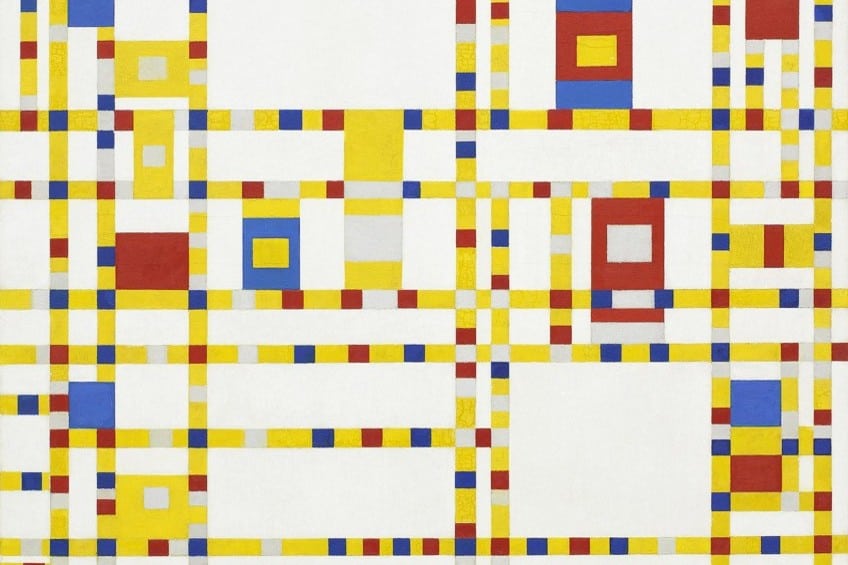Repetition in Art – What Is Repetition in Art and How to Find It?
What is repetition in art and what are the most notable Repetition art examples? As the name suggests, Repetition artworks feature a pattern that is repeated over and over. Let us discover how famous artists have effectively utilized repetition in artworks through the years.
What Is Repetition in Art?
Rhythm in art is unquestionably one of the essential foundational principles of art and its development. Using repetition in art is among the most intriguing techniques that artists use to create a specific design, movement, or ambiguity, to rebel against the concept of artistic traditions, re-defining the concept of the source material and the replicas, or to throw a spotlight on one aspect of the works of art that either makes the artwork more visible or purposefully invisible.
Repetition is regarded as one of the most essential reduction methods.
It is utilized equally in visual arts and music. It is regarded as both an aesthetic and a lyrical technique. Are repetition artworks only using the same themes over and over again to attain excellence, or is there another reason?
The Repetition Artwork Definition
Before we come to some of the most remarkable Repetition art examples and shift our attention to its history, we must first define repetition in art. Being one of the fundamentals of the creative process, repetition, like rhythm, aids in the creation of the perception of motion inside an artwork. It is a recurring pattern, line, form, or other visual feature in a standalone piece or as a component of a series in visual production.
It is difficult to create anything that is both repetitious and thrilling, as many people regard repetition as dull and motionless.
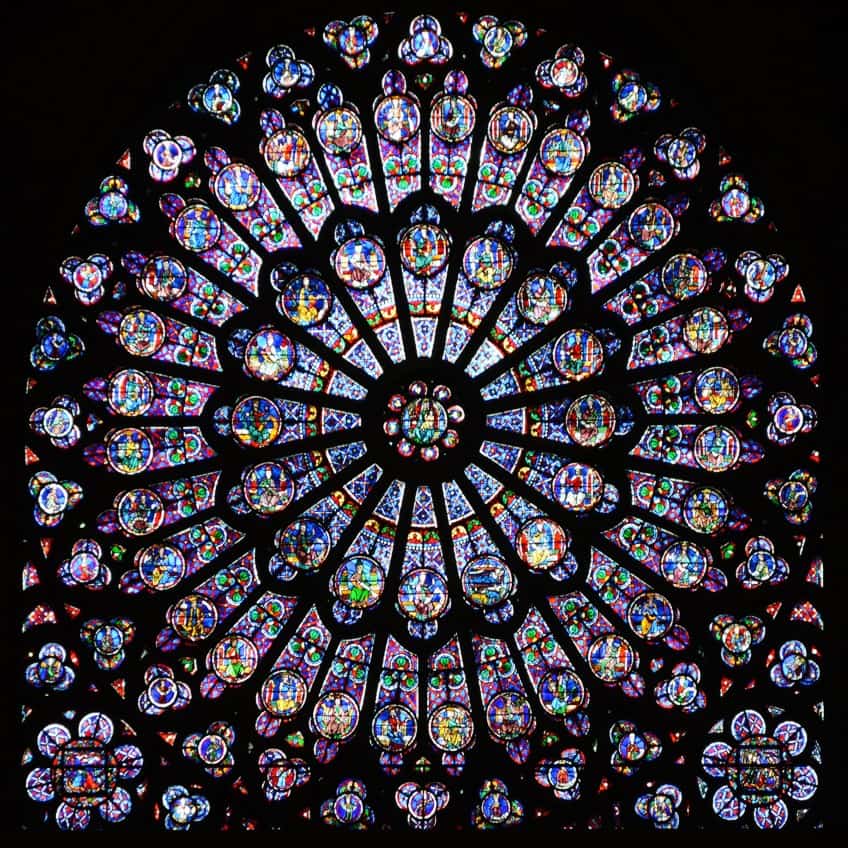
Many artists employed repetition deliberately to remark on the state of affairs of the world around us and to urge people to slow down the race to acquire materialistic items. If no variances are utilized, repetition can be used to create tension, and it is typically in the minor details that the key to appreciating such works lies. There are several ways in which repetition may arise in art.
It can be uneven or even, irregular or regular, form radiation, which occurs when the repetition of sections is extended outwards from the center point, or a type of gradation, in which the portions gradually get smaller or bigger.
Working with repeating patterns, which was highly respected throughout the Art Nouveau style and its pattern-making output, enhances the surface of the piece, rendering it more fascinating to the public, while also adding a sense of structure to the composition.
The History of Repetition in Art
If we avoid commenting on every recurring color, line, pattern, and image in graphic creativity, we can turn our attention away from the understanding of the term “repetition in art” and instead focus on the idea and the internal workings of the creator or the specific era of production and the choice of why they utilized repetition. We enter a universe that uses repetition as a tool for commenting on mass production and consumerism, as seen in the works of Andy Warhol and other Pop artists.
This universe is visible in the works of Wassily Kandinsky, Claude Monet, and Kazimir Malevich, who established some of the most impactful avant-garde movements.
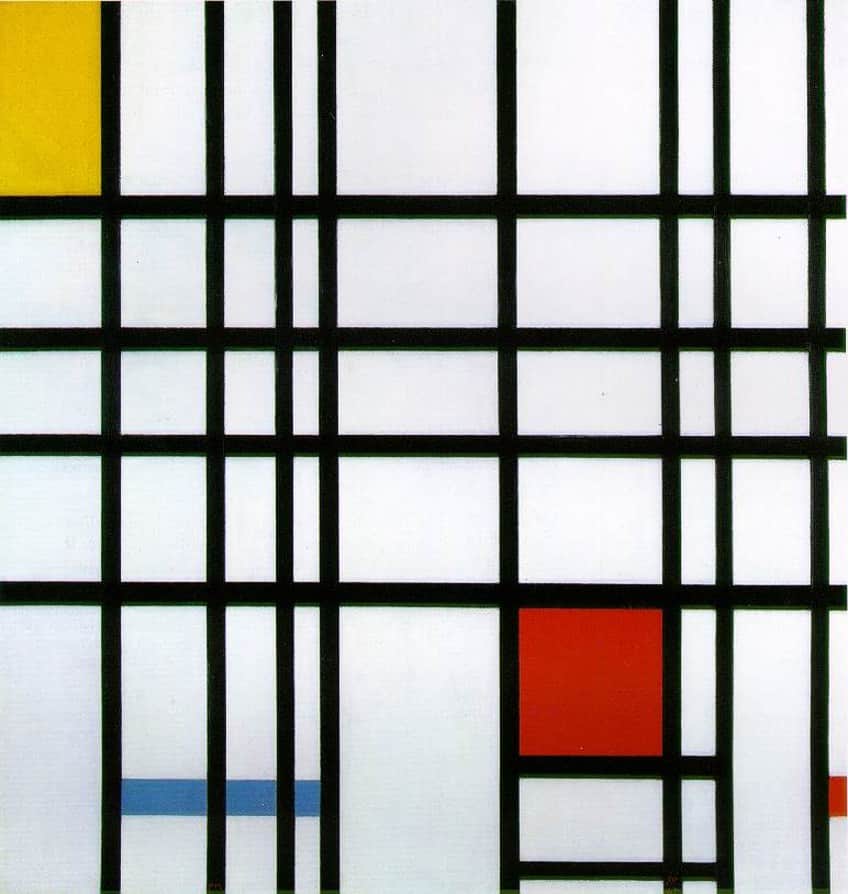
Through the years, repetition in art has taken on several meanings. Questions of authenticity, originality, and appropriation are unquestionably some of the most important issues that tend to come up when one discusses repetition.
This is a significant issue for the Postmodernist philosophy, and the Dada readymades are regarded as significant artworks that poked fun at the necessity for tradition to give the creation and the material selection a specific significance.
The idea of undercutting credibility and value was embraced by conceptual writers, pop artists, minimalists, and performers. Appropriation in art, which is centered on the repetition and re-use of already-existing pictures, poses copyright issues because many modern artists employ readily-available imagery with few or no changes to the original.
Notable Repetition Artists
Many artists, both past and present, have concentrated on continual portrayals of the same topics and patterns in their work throughout the previous two millennia since repetition is built in the very genes of art creation – practice makes perfect. Because ancient sculptors and painters repeated the same works until they perfected their craft, this technique passed over to the Renaissance and Baroque periods.
However, early avant-garde painters were the first to begin repeating the same patterns without accentuating the purpose of becoming more adept at painting but instead pursuing other goals.
Since then, repetition has become an idea in which becoming better is not the end goal of an artist. This major conceptual shift blended perfectly with the anti-traditional forms of art of the 20th century, with many people relying on continuous representations of the same topics and themes to achieve their artistic goals.
Claude Monet (1840 – 1926)
| Nationality | French |
| Date of Birth | 14 November 1840 |
| Date of Death | 5 December 1926 |
| Place of Birth | Rue Laffitte, Paris, France |
| Repetition Art Examples | ● Haystacks series (1890 – 1891) ● Rouen Cathedral series (1892 – 1893) ● Water Lilies series (1897 – 1926) |
Claude Monet was a great French artist who was a key player during the period of Impressionism, which is widely regarded as the first avant-garde movement, although the assertion has been contested. Nevertheless, the manner Impressionists handled their images was so dramatically different from traditional paintings that the whole movement, even Monet, can be reasonably classified as avant-garde.
Monet sought to paint the same scene several times in order to depict the view’s various states based on the moment of the day in which Monet painted them.
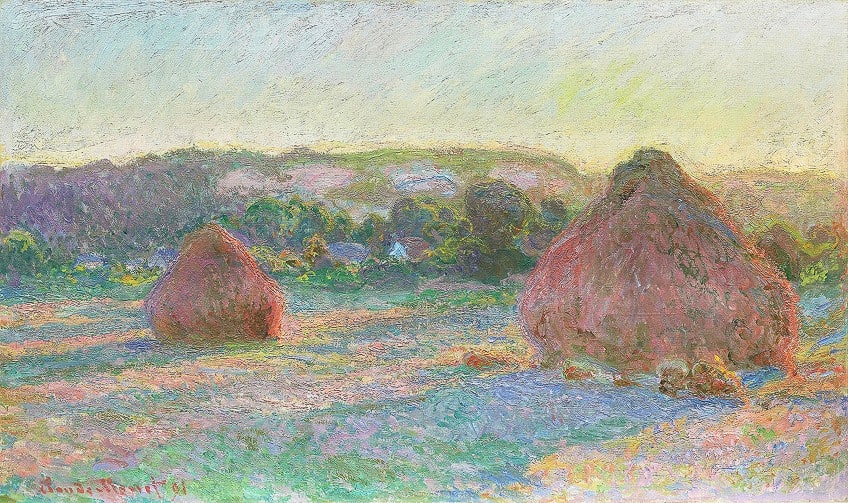
Through repetition, he would create a sequence of such works, the most well-known of which are portrayals of railway stations, water lilies, wheat stacks, and churches. Concentrating on natural light, Monet altered neither his viewpoints nor his equipment, merely the hour at which he painted.
These works are not only significant for the Impressionism phenomena, but they are also legendary for exhibiting an avant-garde attitude of an artist who aspired to break free from traditional forms.
Piet Mondrian (1872 – 1944)
| Nationality | Dutch |
| Date of Birth | 7 March 1872 |
| Date of Death | 1 February 1944 |
| Place of Birth | Amersfoort, Netherlands |
| Repetition Art Examples | ● Composition II in Red, Blue, and Yellow (1929) ● New York City I (1942) ● Broadway Boogie-Woogie (1943) |
Piet Mondrian, another avant-garde artist on our list, was a painter, thinker, and writer who thought that art should represent the underlying spirituality of the natural world around us. To express such an attitude, he reduced the themes of his paintings to their most basic aspects, showing the core of the spiritual energy in the equilibrium of forces that control nature and the cosmos.
Mondrian finally constructed a precise visual language of lines and squares, presenting topics in a fundamental vertical and horizontal form, using such techniques.
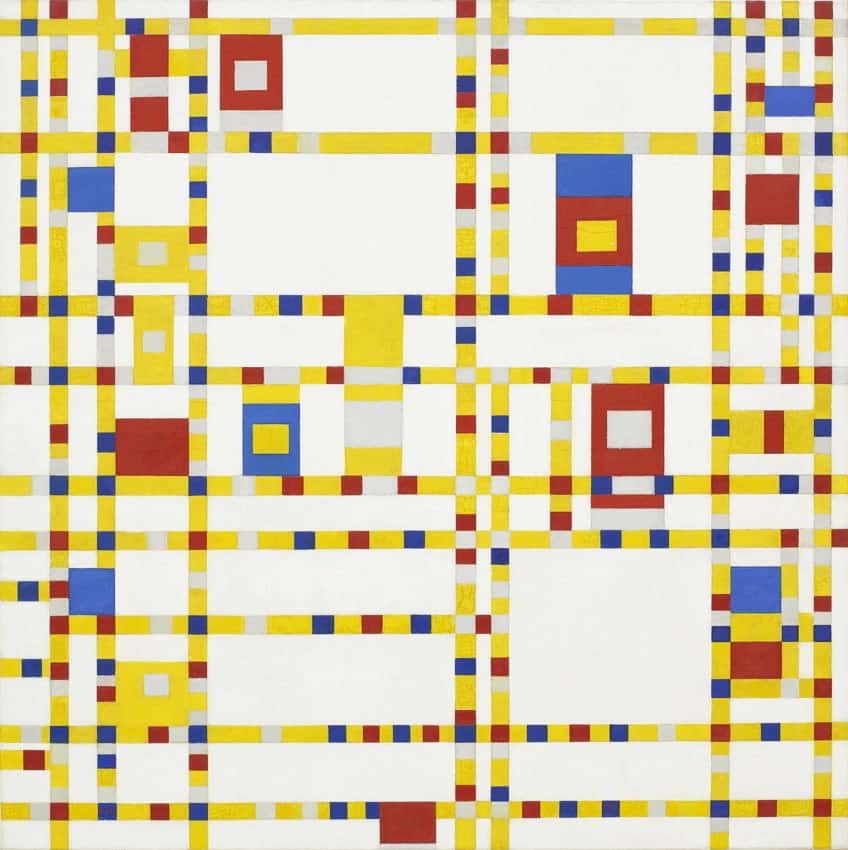
Mondrian’s creative style evolved gradually from conventional representation to pure abstraction, but once set, his whole production consisted of repeating renderings of squares with varied colors divided by strong bold lines. Mondrian’s consistency in depicting squares is one of the most renowned repeated themes in art, and the Neoplasticism theory that underpins them was a pivotal milestone in painting abstraction.
Andy Warhol (1928 – 1987)
| Nationality | American |
| Date of Birth | 6 August 1928 |
| Date of Death | 22 February 1987 |
| Place of Birth | Pittsburgh, Pennsylvania, United States |
| Repetition Art Examples | ● Campbell’s Soup Cans (1962) ● Marilyn Diptych (1962) ● Shot Marilyns (1964) |
Andy Warhol is a Pop art legend and one of the most marketed names of the 20th century. Motivated by popular culture images, Warhol praised and attacked consumer decisions and mass reproduction, thus turning his works into a repeated whirlwind and laying the groundwork for the most prominent Post War II art movement.
Warhol became renowned and authoritative for his repetitive pictures of soda bottles, soup cans, dollar bills, and legendary depictions of celebrities like Mick Jagger, Marilyn Monroe, Jimmy Carter, Elvis Presley, Elizabeth Taylor, and Prince.
He worked in a variety of media including painting, printmaking, silk screening, sketching, photography, sculpture, music, and film. Warhol would frequently incorporate similar images into one piece, arranging them with precision and distinguishing them mainly by color. These prints, drawings, and posters of the same themes repeated in uniform rows are among the 20th century’s most famous pictures.
Warhol’s works are attributed to redefining numerous concepts and creating new standards in modern art.
Yayoi Kusama (1929 – Present)
| Nationality | Japanese |
| Date of Birth | 22 March 1929 |
| Date of Death | N/A |
| Place of Birth | Matsumoto, Nagano, Japan |
| Repetition Art Examples | ● Infinity Mirror Room Fireflies on Water (1965) ● Mushrooms (1995) ● Dots Obsession (2003) |
Although artist Yayoi Kusama works in a variety of mediums ranging from sculpture to painting, every single item she has ever done has the same subject – unending dots. These infinite repeated themes have become a signature of Yayoi Kusama’s art and have become an instantaneous giveaway that you are looking at one of her works.
Kusama’s art of spots shows that one may work within blended themes of minimalism, feminism, Art Brut, surrealism, abstract expressionism, and Pop art without compromising any of them.
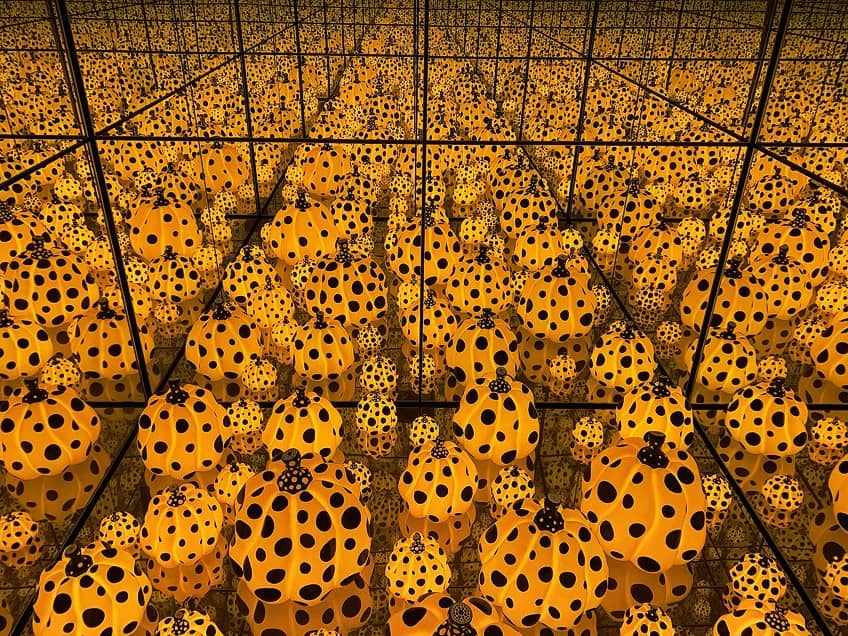
Additionally, because Yayoi Kusama has been working for over 60 years, the degree of repetition of psychedelic hues has become the most consistent in the history of contemporary Asian art. This controversial avant-garde Japanese artist became one of the most renowned personalities in her country’s current culture and a superb example of continuity in modern art due to her distinctive artistic expression.
Yue Minjun (1962 – Present)
| Nationality | Chinese |
| Date of Birth | 1962 |
| Date of Death | N/A |
| Place of Birth | Daqing, China |
| Repetition Art Examples | ● On the Lake (1994) ● Execution (1996) ● Free and Leisure 10 (2003) |
Yue Minjun is undoubtedly one of the most amusing artists on this list. This artist and sculptor from Beijing utilize the same concept in all of his works: his own face, usually caught in uncontrollable laughter. Irrespective of the media, Minjun’s self-illustrations are located in a variety of situations, some humorously familiar and some out of the ordinary, all with his face as the focal point.
With intriguing compositions like a scenario set in the Jurassic period with two Minjuns smiling by a BMW or a lot of chuckling Minjuns trying to shoot another group of Minjuns with huge smiles, it’s simple to see why this Chinese creator is held in such high respect and has such a large audience.
Yue Minjun’s unparalleled sense of humor is perhaps one of, if not the most powerful feature of his work, but the fact that he uses the same theme in every single sculpture and painting he creates is what earned him a spot on our list.
In the field of art, repetition is a contentious issue. Some artists believe it is the end of creativity. Some, though, such as Andy Warhol, found a niche in creating repeating prints of the very same theme over and over. Art students study themes such as design principles of repetition, which are useful in giving an artwork a distinct feeling of unity, consistency, and coherence. The visual stimulation increases when a pattern is established.
Frequently Asked Questions
What Is Repetition Artwork?
Nature repeats itself in complicated patterns – fractals are repeating self-similar complex structures formed by continually replicating a basic mechanism in a continuous feedback loop. In the visual arts, repetition may be defined as a recurrent form, color, item, pattern, or another element within a piece of art. It is sometimes not just the recurrence of similar forms or colors that draws the audience’s eye to every one of the compositional aspects in a painting, but a mix of the two.
Why Do Artists Use Repetition in Art?
When we look at works of art, our eyes generally wander around the surface of the canvas, catching sight of various objects and figures in the artwork. Our attention is pulled to certain areas of the image – specific people or activities that advance the story represented in the image or transmit specific information to the observer. Undoubtedly, the artist wishes to ensure that the viewer’s attention is drawn to the image’s main aspects, rather than ornamental or background elements. Repetition is a method that painters frequently employ to highlight essential parts within a painting’s arrangement and to draw the eye of the viewer around the painting.
Jordan Anthony is a Cape Town-based film photographer, curator, and arts writer. She holds a Bachelor of Art in Fine Arts from the University of the Witwatersrand, Johannesburg, where she explored themes like healing, identity, dreams, and intuitive creation in her Contemporary art practice. Jordan has collaborated with various local art institutions, including the KZNSA Gallery in Durban, the Turbine Art Fair, and the Wits Art Museum. Her photography focuses on abstract color manipulations, portraiture, candid shots, and urban landscapes. She’s intrigued by philosophy, memory, and esotericism, drawing inspiration from Surrealism, Fluxus, and ancient civilizations, as well as childhood influences and found objects. Jordan is working for artfilemagazine since 2022 and writes blog posts about art history and photography.
Learn more about Jordan Anthony and about us.
Cite this Article
Jordan, Anthony, “Repetition in Art – What Is Repetition in Art and How to Find It?.” artfilemagazine – Your Online Art Source. November 29, 2022. URL: https://artfilemagazine.com/repetition-in-art/
Anthony, J. (2022, 29 November). Repetition in Art – What Is Repetition in Art and How to Find It?. artfilemagazine – Your Online Art Source. https://artfilemagazine.com/repetition-in-art/
Anthony, Jordan. “Repetition in Art – What Is Repetition in Art and How to Find It?.” artfilemagazine – Your Online Art Source, November 29, 2022. https://artfilemagazine.com/repetition-in-art/.


